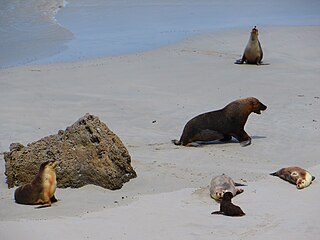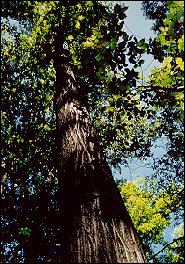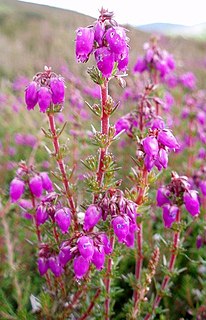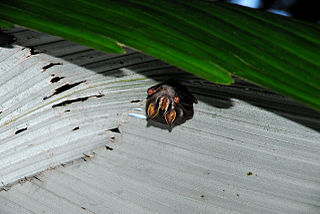
Botrytis cinerea is a necrotrophic fungus that affects many plant species, although its most notable hosts may be wine grapes. In viticulture, it is commonly known as "botrytis bunch rot"; in horticulture, it is usually called "grey mould" or "gray mold".

The grey wagtail is a member of the wagtail family, Motacillidae, measuring around 18–19 cm overall length. The species looks somewhat similar to the yellow wagtail but has the yellow on its underside restricted to the throat and vent. Breeding males have a black throat. The species is widely distributed, with several populations breeding in Europe and Asia and migrating to tropical regions in Asia and Africa. The species is always associated with running water when breeding, although they may use man-made structures near streams for the nest. Outside the breeding season, they may also be seen around lakes, coasts and other watery habitats. Like other wagtails, they frequently wag their tail and fly low with undulations and they have a sharp call that is often given in flight.

Matthew Raymond Dillon is an American actor and film director. He made his feature film debut in Over the Edge (1979) and established himself as a teen idol by starring in the films My Bodyguard (1980), Little Darlings (1980), Tex (1982), Rumble Fish (1983), The Outsiders (1983) and The Flamingo Kid (1984). From the late 1980s onward, Dillon achieved further success, starring in Drugstore Cowboy (1989), Singles (1992), The Saint of Fort Washington (1993), To Die For (1995), Beautiful Girls (1996), In & Out (1997), There's Something About Mary (1998), and Wild Things (1998). In a 1991 article, famed movie critic Roger Ebert referred to him as the best actor within his age group, along with Sean Penn.

The Australian sea lion also known as the Australian sea-lion or Australian sealion, is a species of sea lion that is the only endemic pinniped in Australia. It is currently monotypic in the genus Neophoca, with the extinct Pleistocene New Zealand sea lion Neophoca palatina the only known congener. These sea lions are sparsely distributed through Houtman Arbrolhos Islands in Western Australia and The Pages Islands in Southern Australia. With a population estimated at around 14,730 animals, the Wildlife Conservation Act of Western Australia (1950) has listed them as “in need of special protection”. Their Conservation status is listed as endangered. These pinnipeds are specifically known for their abnormal breeding cycles, which are varied between 5 months breeding cycle and a 17-18 month aseasonal breeding cycle, compared to other pinnipeds which fit into a 12-month reproductive cycle. Females are either silver or fawn with a cream underbelly and males are dark chocolate brown with a yellow mane and are bigger than the females.

Juglans cinerea, commonly known as butternut or white walnut, is a species of walnut native to the eastern United States and southeast Canada.

Erica cinerea is a species of flowering plant in the heath family Ericaceae, native to western and central Europe.

Vitis cinerea, the graybark grape, is a variety of grape. It has small black berries that are mildly unpleasant to eat. Plentiful in Missouri and Louisiana, it is also found throughout the eastern half of the US as far west as Texas, north to Illinois, and south to Florida. It is also known by the name "winter grape" or "possum grape."

Salix cinerea is a species of willow native to Europe and western Asia.

Gervais's fruit-eating bat is a bat species from South America. It is found in Brazil, French Guiana, Guyana, eastern Peru, Suriname and eastern Venezuela.
The Wych Elm cultivar Ulmus glabra 'Nigra', commonly known as the Black Irish Elm, was found in the Kilkenny area c.1770 by the father of nurseryman John Robertson of Kilkenny, who later cultivated it. Robertson stated that he had not seen the form outside Ireland. It was listed by Loddiges (1830) as Ulmus nigra, and described by Loudon in Arboretum et Fruticetum Britannicum (1838), as Ulmus montana nigra. 'Nigra' is not mentioned in either Elwes and Henry's or Bean's classic works on British trees.
The hybrid elm cultivar Ulmus × hollandica 'Cinerea' was first listed by George Lindley in 1815, as Ulmus cinerea, the Ash-coloured Elm, and later by the André Leroy Nurseries, Angers, France, in 1856. It was distributed as Ulmus cinerea by the Baudriller nursery, Angers, and as Ulmus montana cinerea by Louis van Houtte of Ghent. A specimen in cultivation at Kew in 1964 was found to be U. × hollandica, but the tree at Wakehurst Place remains listed as U. glabra 'Cinerea'.

Dichrostachys cinerea, known as sicklebush, Bell mimosa, Chinese lantern tree or Kalahari Christmas tree, is a legume of the genus Dichrostachys in the Fabaceae family.

Austin Dillon, nicknamed, "The Ace", is an American professional stock car racing driver. He is the son of former driver and RCR general manager Mike Dillon, older brother of Ty Dillon and grandson of Richard Childress. He currently competes full-time in the Monster Energy NASCAR Cup Series, driving the No. 3 Chevrolet Camaro ZL1 for Richard Childress Racing, and part-time in the NASCAR Xfinity Series, driving the No. 21 Chevrolet Camaro SS for RCR.

Ty Dillon is an American professional stock car racing driver. He is the younger brother of fellow NASCAR driver Austin Dillon, son of former driver and RCR general manager Mike Dillon, and grandson of Richard Childress. He currently competes full-time in the Monster Energy NASCAR Cup Series, driving the No. 13 Chevrolet Camaro ZL1 for Germain Racing and part-time in the NASCAR Xfinity Series, driving the No. 21 Chevrolet Camaro for Richard Childress Racing.

Loricaria is a genus of South American flowering plants in the pussy's-toes tribe within the sunflower family.

Cap Island Conservation Park is located 7.5 km offshore, west of Mount Misery, Eyre Peninsula. The park covers Cap Island's 8ha surface. The island consists of a granite base and a calcarenite mantle; its margins steeply over-hanging and eroded. Typical vegetation is a low Nitre Bush shrubland. Cap Island Conservation Park was constituted by statute in 1972 to conserve a sea bird breeding area and Australian Sea-lion and New Zealand Fur-seal haul-out areas.

Lamiini is a tribe of longhorn beetles of the Lamiinae subfamily.

Sybra is a genus of beetles in the family Cerambycidae, containing the following species:
Sormida is a genus of longhorn beetles of the subfamily Lamiinae.
Sormida maculicollis is a species of beetle in the family Cerambycidae. It was described by Thomson in 1865.
















